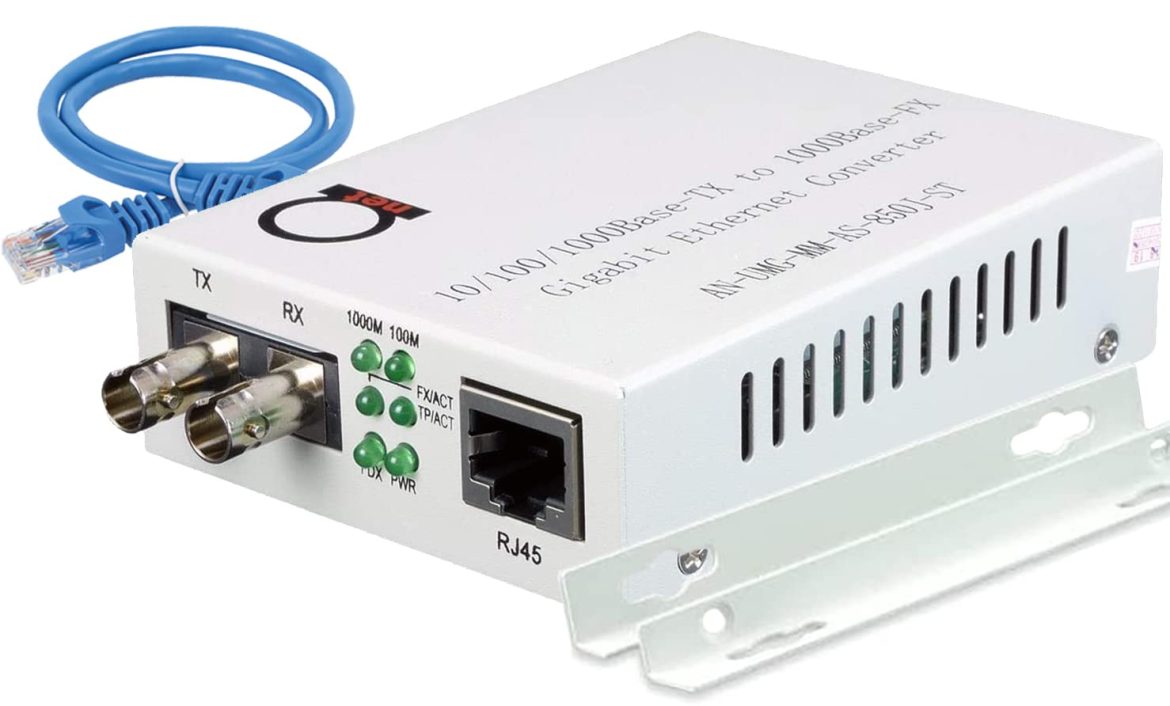Ethernet is the standard for wired computer networks. Fiber optic cable is the standard for long-distance data communications. So, what happens when you need to connect devices that use Ethernet with those that use fiber optic cable? The solution is to use a fiber to Ethernet converter with Power over Ethernet (PoE). This type of device allows you to transmit data and power over a single cable, making it perfect for connecting devices in remote locations. In this blog post, we’ll explore the benefits of using a PoE converter and why you should choose one for your next project.
What is a Fiber To Ethernet Converter With Power Over Ethernet?
A fiber to Ethernet converter with Power over Ethernet (PoE) is a type of network device that provides a means for connecting Ethernet devices to a fiber optic network. It is used in applications where the distance between the devices is too great for conventional copper Ethernet cabling, or where the weight or cost of running fiber optic cable is prohibitive.
PoE-enabled fiber to Ethernet converters receive power from the PoE source, which eliminates the need for an external power adapter. This can be particularly useful in installations where there is no convenient outlet for powering the device. In addition, many PoE-enabled converters can also provide power to other PoE-compliant devices, such as IP phones or wireless access points.
When selecting a fiber to Ethernet converter with PoE, it is important to consider the specific needs of your installation. Converters are available with various combinations of port types and speeds, and with different amounts of power output. Make sure to select a device that is compatible with the equipment you intend to use it with, and that has enough power output to support all of the powered devices on your network.
How Does a Fiber To Ethernet Converter Work?
As businesses looks for ways to increase bandwidth and support more devices on their network, they are turning to fiber optic cabling. Fiber optics can transmit data much faster than traditional copper cabling, and it is also much less susceptible to interference. However, most devices on a network still use Ethernet, which uses copper cabling.
To connect devices that use Ethernet to a fiber optic network, a fiber to Ethernet converter is used. This device converts the optical signals from the fiber optic cable into electrical signals that can be used by Ethernet-enabled devices.
Most converters also support Power over Ethernet (PoE), which allows them to deliver power to devices through the same Ethernet cable that is used for data transmission. This can be very useful for powering devices that are located in difficult or hard-to-reach places.
When choosing a fiber to Ethernet converter, it is important to make sure that it supports the speed and distance requirements of your network. It is also important to consider whether you need PoE support.
How to Choose the Right Fiber To Ethernet Converter
If you’re looking to convert your Ethernet connection to a fiber optic one, you’ll need a fiber to Ethernet converter. But with so many different types and models on the market, how do you know which one to choose?
Here are a few things to keep in mind when shopping for a fiber to Ethernet converter:
– The type of connection you need. There are two main types of converters: single-mode and multi-mode. Single-mode is typically used for long distance applications, while multi-mode is best for shorter distances.
– The speed of the connection. Fiber optic connections are much faster than traditional copper Ethernet cables, so you’ll want to make sure the converter you choose can handle the speeds you need.
– The port type. There are three main types of ports: LC, SC, and ST. LC (Lucent Connector) is the most common type, while SC (Subscriber Connector) is typically used for higher speed applications. ST (Straight Tip) connectors are less common but can be used with either single or multi-mode converters.
– The size of the unit. Fiber to Ethernet converters come in a variety of sizes, from standalone units to those that can be rack mounted. Choose the size that best fits your needs.
Keep these factors in mind and you’ll be sure to choose the right fiber to Ethernet converter for your needs!
Conclusion
If you’re looking for a reliable and high-performance fiber to Ethernet converter, be sure to choose one with Power over Ethernet. This will ensure that your converter can provide the power it needs without having to rely on an external power source. In addition, Power over Ethernet converters are more energy-efficient than those without this feature, making them a great choice for eco-conscious users.

